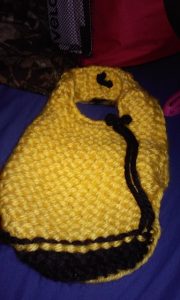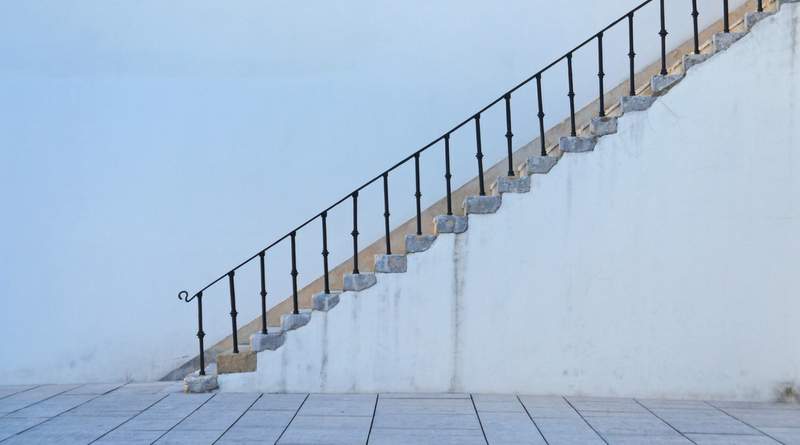From Idea to Published Knitting Pattern in Six Easy Steps
Recently a fellow knitter asked me about the way from idea to published knitting pattern, and I’m asked this question a lot on my Facebook group and my mailing list, too. So let’s dive in and have a deeper look how a knitting pattern is created from start to finish.
The big picture:
- You have an idea.
- You work out the maths & knit a sample.
- You write a pattern draft.
- You take pictures of the finished sample.
- You find test knitters and an editor and turn your draft into the final pattern.
- You publish your pattern (and maybe sell it, too).
Let’s look at it step by step.
1. Idea
So you have this brilliant idea about a new knitting pattern and really would like to turn it not only into a project for yourself but also a knitting pattern you can share with others (and maybe, sell it).
Or maybe you don’t have a specific idea yet, but you want to create a knitting pattern to create revenue or increase your audience and reputation.
In the first case, things are easy: The idea is already there, you only need to turn it into a pattern. When you’re out of inspiration here are some ideas to get you started:
- Browse your stash and find yarn you like, and start by swatching some knitting stitch patterns.
- Visit your local yarn store, find some lovely yarn and do the same as above.
- Read my recent article about inspiration.
- Visit your library and browse the art section – there’s plenty of inspiration out there: fashion designers, graphic designers, tile patterns from various countries and cultures, and many more. (I created a whole pattern collection based on inspiration from an 1680s vintage book about plant botany illustrations once: Plant Anatomy.)
- Listen to your favourite songs and use their spirit and your mood to create a theme you can start with. (I used this approach for Knitting in the Waiting Room.)
2. Sample Knitting
No pattern is ever complete without a picture of the finished object. People want to see what they’ll get when considering buying or downloading you pattern, so you need to get some pictures. Without knitting a sample there will be nothing to take pictures of.
Before starting to knit your sample you need to work swatches, do the maths about sizing and generally have a good idea how your future pattern works all together. You can start with knitting the sample and write your pattern draft (see below) afterwards, or you can write the draft first and then knit the sample from it (and eliminate the most obvious errors), or do both at the same time, fixing errors as you go (that’s the way I’m handling it).
An alternative is to hire a sample knitter. In this case you need to finish the pattern draft before the sample knitting can be started.
3. Pattern Draft
The next step is to write a pattern draft. It should include all necessary information to recreate your sample. I wrote an extensive article about writing your first pattern draft recently, Your First Pattern Draft. Consider reading it first if you need help with creating your pattern draft.
4. Photography
Why Is Good Photography So Important? Imagine you’re looking for a knitting pattern for a dog sweater online and you’re ready to purchase a pattern from somebody else. You come across the following two pattern pictures. Which one would you click on?
[one_half]

[/one_half]
[one_half]

[/one_half]
There’s not much to add here I guess. Your pattern pictures determine if people click on your pattern (and buy it!) or not. It’s simple as that. Take the best pictures you can!
If you need more info about how to take professional pictures for your patterns you should read my recent article Pattern Photography That Rocks.
5. Testing & Editing
The answer is simple: you will not catch all errors u´during sample knitting, especially not if you’re knitting the sample yourself.
You will need test knitters that are not yourself. That’s a fact.
You are familiar with your pattern. You wrote it, after all! Which means you are very likely to miss errors by simply overlooking them. Why? Because you anticipate the right steps. A tester does not.
As an aspiring knitting pattern designer, please take this advice: let other people test knit your patterns!
So now we have a new problem: how to find test knitters for your new knitting pattern? This question has been answered here: How To Find Test Knitters.
When it comes to editing of your pattern it’s all about error elimination and implementing final changes into your pattern.
First, find an editor. No, you can’t be your own editor. Before you hand over the final draft to your editor, make sure to do the following:
- Take all notes and suggestions you got in the process of test knitting and alter your knitting pattern accordingly.
- Eliminate all pattern errors that have been found in the testing stage.
- Update your charts and legend, if applicable.
- Double check if you included all elements needed.
After finishing all that, hand over your final draft to your editor and let him or her check your pattern for errors again.
6. Publishing & Selling
Congratulations on making it to this point! You finished your pattern, now you need to publish (and maybe even sell) your new pattern.
I write a whole article about publishing your knitting patterns recently, Knitting Pattern Publishing.
When it comes to selling your patterns, well, this is a whole story by itself. I’m currently writing an article about how to sell your knitting patterns and hope you’ll enjoy reading it as soon as it has been published – links will be updated once it goes live.

